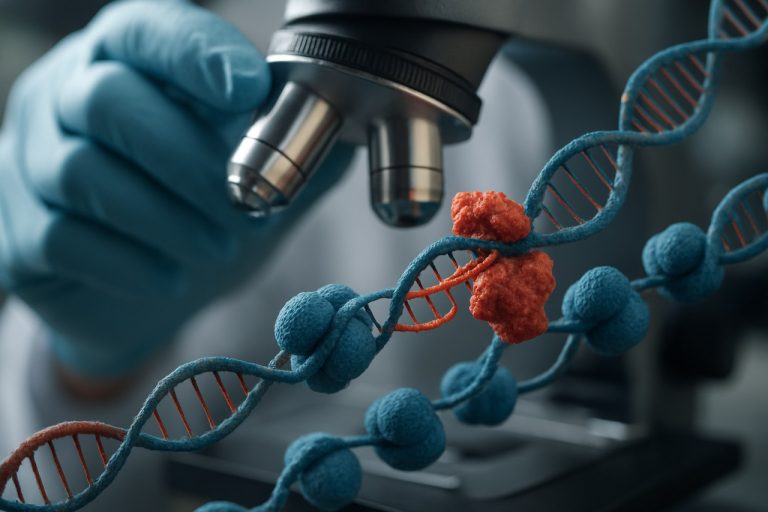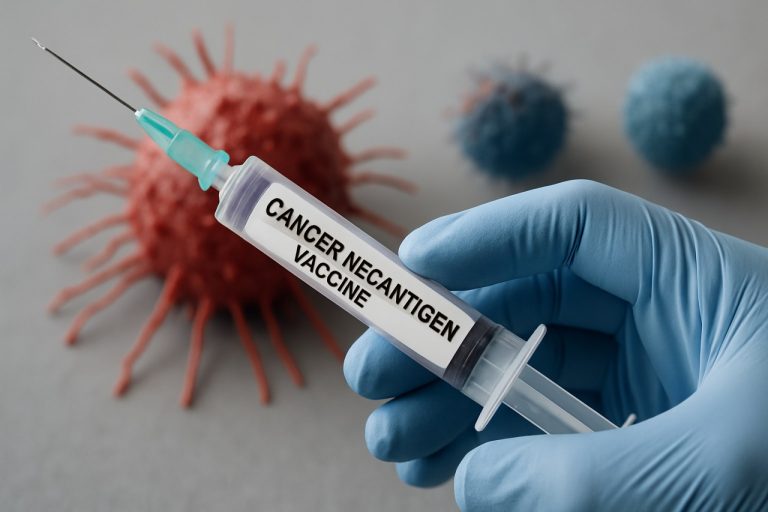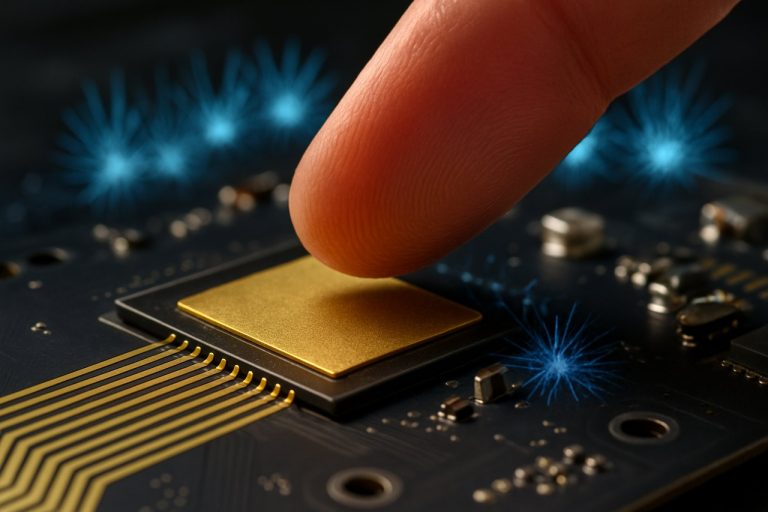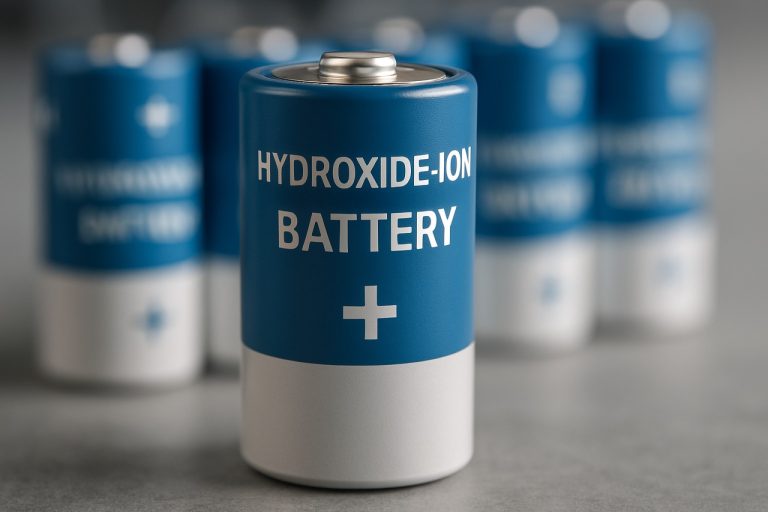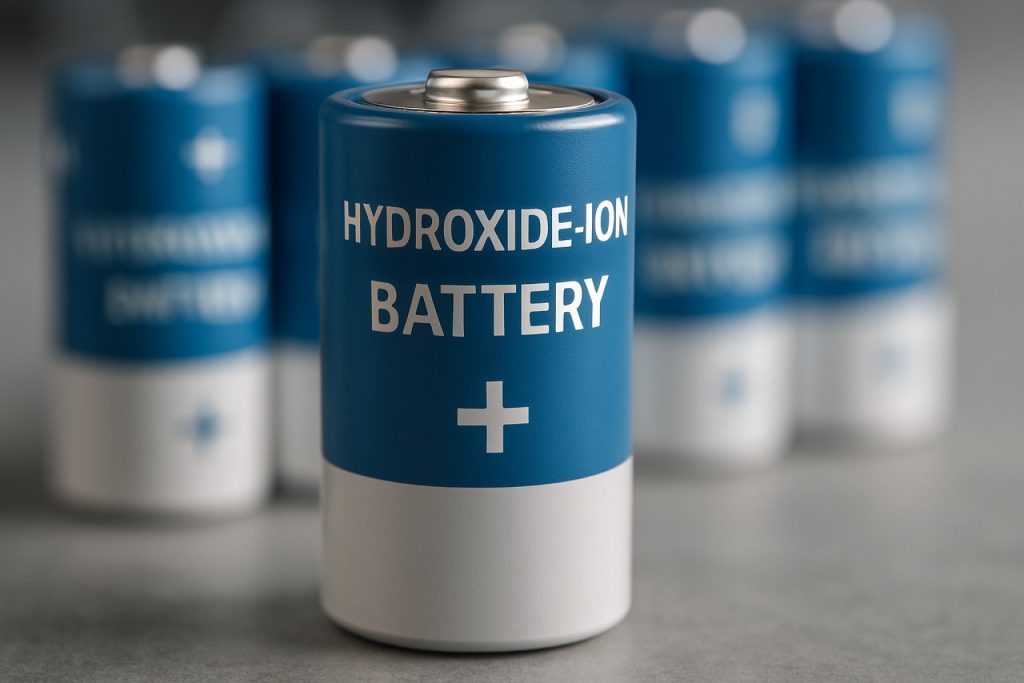
Hydroxide-Ion Batteries Explained: Unlocking Greener, Safer, and More Efficient Power Solutions. Discover How This Emerging Technology Could Transform the Future of Energy Storage.
- Introduction to Hydroxide-Ion Batteries
- How Hydroxide-Ion Batteries Work
- Key Advantages Over Traditional Battery Technologies
- Materials and Chemistry Behind Hydroxide-Ion Batteries
- Current Research and Development Landscape
- Performance Metrics: Efficiency, Lifespan, and Safety
- Environmental Impact and Sustainability
- Potential Applications and Market Opportunities
- Challenges and Barriers to Commercialization
- Future Outlook and Innovations
- Sources & References
Introduction to Hydroxide-Ion Batteries
Hydroxide-ion batteries (HIBs) represent an emerging class of rechargeable batteries that utilize hydroxide ions (OH⁻) as the primary charge carriers, distinguishing them from conventional lithium-ion and proton-based systems. The fundamental operation of HIBs involves the migration of hydroxide ions between the anode and cathode through an alkaline electrolyte, typically a concentrated aqueous solution of potassium hydroxide (KOH) or sodium hydroxide (NaOH). This unique mechanism enables the use of abundant, low-cost, and environmentally benign materials, such as transition metal oxides and iron-based compounds, for both electrodes, potentially reducing reliance on critical raw materials like lithium and cobalt.
One of the key advantages of hydroxide-ion batteries is their inherent safety, as the aqueous electrolytes are non-flammable and less prone to thermal runaway compared to organic electrolytes used in lithium-ion batteries. Additionally, HIBs can operate at relatively high power densities and exhibit fast charge-discharge kinetics due to the high mobility of hydroxide ions in aqueous media. However, challenges remain, including limited cycle life, electrode dissolution, and the need for highly selective and stable membranes to prevent crossover of active species. Recent research efforts are focused on developing advanced electrode materials, optimizing electrolyte composition, and engineering robust separators to address these issues and enhance the overall performance of HIBs.
As the demand for sustainable and scalable energy storage solutions grows, hydroxide-ion batteries are gaining attention as a promising alternative for grid-scale storage and other stationary applications. Ongoing developments in this field are supported by leading research institutions and government agencies worldwide, such as the National Renewable Energy Laboratory and the U.S. Department of Energy.
How Hydroxide-Ion Batteries Work
Hydroxide-ion batteries (HIBs) operate on the principle of reversible hydroxide ion (OH−) transport between the anode and cathode through an alkaline electrolyte. Unlike conventional lithium-ion batteries, which rely on the movement of lithium ions, HIBs utilize hydroxide ions as the primary charge carriers. During discharge, the anode (often a metal such as zinc or iron) undergoes oxidation, releasing electrons and generating metal cations. Simultaneously, hydroxide ions from the electrolyte migrate toward the anode, where they participate in the oxidation reaction, forming metal hydroxides. The released electrons travel through the external circuit, providing electrical energy to the connected device.
At the cathode, a reduction reaction occurs, typically involving the conversion of oxygen (from air or a solid-state source) and water into hydroxide ions. This process completes the circuit by replenishing the electrolyte with OH− ions. The overall cell reaction is highly dependent on the choice of electrode materials and the specific chemistry employed, but the central mechanism remains the shuttling of hydroxide ions between electrodes. This design enables the use of abundant, low-cost materials and can potentially offer high safety and environmental benefits due to the absence of flammable organic electrolytes and critical raw materials like lithium or cobalt.
Recent advances in electrode and electrolyte design have improved the reversibility and efficiency of hydroxide-ion transport, addressing challenges such as electrode degradation and limited cycle life. These innovations are paving the way for HIBs to become a promising alternative for large-scale energy storage applications.Nature Energy Cell Reports Physical Science
Key Advantages Over Traditional Battery Technologies
Hydroxide-ion batteries (HIBs) offer several compelling advantages over traditional battery technologies such as lithium-ion and lead-acid systems. One of the most significant benefits is their reliance on abundant and low-cost materials, including transition metals and alkaline electrolytes, which reduces both the environmental impact and the overall production cost compared to batteries that depend on scarce or geopolitically sensitive elements like lithium or cobalt (Nature Energy). This makes HIBs particularly attractive for large-scale energy storage and grid applications.
Another key advantage is the enhanced safety profile of HIBs. Unlike lithium-ion batteries, which are prone to thermal runaway and fire hazards due to flammable organic electrolytes, HIBs typically use aqueous electrolytes that are non-flammable and less prone to catastrophic failure (Cell Reports Physical Science). This feature is crucial for applications where safety is paramount, such as in residential energy storage or electric vehicles.
Additionally, HIBs exhibit high ionic conductivity and fast charge/discharge capabilities, owing to the rapid mobility of hydroxide ions in aqueous solutions. This can translate to improved power performance and longer cycle life, addressing some of the limitations faced by conventional batteries (Cell Reports Physical Science). Furthermore, the use of water-based electrolytes enables easier recycling and disposal, supporting a more sustainable battery lifecycle (Nature Energy).
Materials and Chemistry Behind Hydroxide-Ion Batteries
Hydroxide-ion batteries (HIBs) represent a promising class of rechargeable batteries that utilize hydroxide ions (OH−) as the primary charge carriers. The materials and chemistry underlying HIBs are distinct from those in conventional lithium-ion or sodium-ion batteries, offering unique advantages in terms of safety, cost, and sustainability. The core components of HIBs include the anode, cathode, electrolyte, and separator, each tailored to facilitate efficient hydroxide-ion transport and reversible electrochemical reactions.
The cathode materials in HIBs are typically transition metal oxides or perovskite-type compounds, such as nickel or cobalt oxides, which can reversibly intercalate or react with hydroxide ions during charge and discharge cycles. The anode is often composed of metals like zinc, iron, or manganese, which undergo oxidation reactions in alkaline environments. The electrolyte is a concentrated aqueous solution of potassium hydroxide (KOH) or sodium hydroxide (NaOH), providing a high concentration of mobile OH− ions and enabling fast ionic conductivity. This aqueous environment not only enhances safety by reducing flammability but also allows for the use of earth-abundant and non-toxic materials.
A key challenge in HIB chemistry is the development of stable electrode materials that can withstand repeated cycling in highly alkaline conditions without significant degradation. Additionally, the design of selective and robust separators is crucial to prevent crossover of active species and maintain cell integrity. Recent research has focused on optimizing electrode microstructures, surface coatings, and electrolyte additives to improve cycle life and energy density. These advances are paving the way for HIBs to become viable alternatives for large-scale energy storage applications, as highlighted by Nature Energy and Cell Reports Physical Science.
Current Research and Development Landscape
The current research and development landscape for hydroxide-ion batteries (HIBs) is marked by rapid advancements and growing interest, driven by the need for safer, more sustainable, and cost-effective energy storage solutions. Unlike conventional lithium-ion batteries, HIBs utilize hydroxide ions (OH⁻) as charge carriers, enabling the use of abundant and non-toxic materials such as zinc, iron, and manganese for electrodes. This has spurred significant academic and industrial research into optimizing electrode materials, electrolytes, and cell architectures to enhance performance and longevity.
Recent studies have focused on improving the ionic conductivity and stability of alkaline electrolytes, which are crucial for efficient hydroxide-ion transport and minimizing side reactions. Researchers are also investigating novel electrode materials, such as layered double hydroxides and perovskite oxides, to achieve higher energy densities and better cycling stability. For example, advances in manganese-based cathodes have demonstrated promising electrochemical performance and reversibility, addressing some of the key challenges in HIB development Nature Energy.
In addition, efforts are underway to scale up HIB technology for grid-scale and stationary energy storage applications, with several pilot projects and prototypes being reported in recent years Cell Reports Physical Science. However, challenges remain, including electrolyte degradation, electrode dissolution, and limited cycle life, which are the focus of ongoing research. Collaborative initiatives between academic institutions and industry are accelerating the translation of laboratory breakthroughs into commercially viable products U.S. Department of Energy.
Performance Metrics: Efficiency, Lifespan, and Safety
Performance metrics are critical in evaluating the viability of hydroxide-ion batteries (HIBs) for practical applications. Three key parameters—efficiency, lifespan, and safety—determine their competitiveness against established battery technologies.
Efficiency in HIBs is often measured by coulombic efficiency and energy efficiency. Recent studies have reported coulombic efficiencies exceeding 99% in optimized systems, attributed to the reversible nature of hydroxide-ion transport and minimized side reactions. However, energy efficiency can be affected by overpotentials at the electrodes and ionic conductivity of the electrolyte. Innovations in electrode materials and membrane design are actively being pursued to reduce these losses and improve round-trip efficiency Nature Energy.
Lifespan is another crucial metric, with cycle life depending on the stability of both electrodes and the electrolyte. HIBs have demonstrated cycle lives of several hundred to over a thousand cycles under laboratory conditions, with capacity retention rates above 80% in some cases. Degradation mechanisms, such as electrode dissolution, electrolyte carbonation, and membrane fouling, remain challenges that researchers are addressing through material engineering and system optimization American Chemical Society.
Safety is a notable advantage of HIBs. Unlike lithium-ion batteries, HIBs use aqueous electrolytes, which are non-flammable and less prone to thermal runaway. This inherently safer chemistry reduces risks associated with overheating and fire, making HIBs attractive for large-scale and residential energy storage Cell Press.
Environmental Impact and Sustainability
Hydroxide-ion batteries (HIBs) are emerging as a promising alternative to conventional lithium-ion batteries, particularly in the context of environmental impact and sustainability. One of the primary advantages of HIBs lies in their use of abundant and non-toxic materials, such as zinc, iron, and manganese, which significantly reduces the ecological footprint associated with battery production and disposal. Unlike lithium and cobalt, which are often sourced through environmentally damaging mining practices, the raw materials for HIBs are widely available and can be extracted with less environmental disruption International Energy Agency.
Additionally, HIBs operate in aqueous electrolytes, which are inherently safer and less polluting than the organic solvents used in many traditional batteries. This reduces the risk of hazardous leaks and simplifies end-of-life recycling processes. The recyclability of HIB components further enhances their sustainability profile, as many of the metals used can be efficiently recovered and reused, minimizing waste and resource depletion U.S. Environmental Protection Agency.
However, challenges remain regarding the scalability and long-term durability of HIBs. The environmental benefits can only be fully realized if these batteries achieve widespread adoption and demonstrate competitive performance over multiple charge-discharge cycles. Ongoing research is focused on improving cycle life and energy density while maintaining the low environmental impact that distinguishes HIBs from other battery technologies Nature Energy. As advancements continue, HIBs have the potential to play a significant role in the transition to more sustainable energy storage solutions.
Potential Applications and Market Opportunities
Hydroxide-ion batteries (HIBs) are emerging as a promising alternative to conventional lithium-ion and sodium-ion batteries, offering unique advantages that open up diverse potential applications and market opportunities. Their use of abundant, low-cost materials—such as iron, manganese, and nickel—positions HIBs as a sustainable solution for large-scale energy storage, particularly in grid-level applications where cost and resource availability are critical factors. The inherent safety of aqueous electrolytes in HIBs, which are non-flammable and less prone to thermal runaway, further enhances their appeal for stationary storage in residential, commercial, and utility-scale settings Nature Energy.
In addition to grid storage, HIBs have potential in backup power systems, renewable energy integration, and microgrid applications, where their long cycle life and high rate capability can be leveraged. Their environmental compatibility and reduced reliance on critical raw materials also make them attractive for deployment in regions with limited access to lithium or cobalt resources. Furthermore, ongoing research into flexible and miniaturized HIBs suggests future opportunities in portable electronics and wearable devices Cell Reports Physical Science.
While HIBs are still in the developmental stage, their scalability, safety, and sustainability could enable them to capture significant market share in the rapidly expanding global energy storage sector. Strategic investments and continued innovation will be key to overcoming current technical challenges and unlocking the full commercial potential of hydroxide-ion batteries International Energy Agency.
Challenges and Barriers to Commercialization
Despite their promise as next-generation energy storage devices, hydroxide-ion batteries (HIBs) face several significant challenges that hinder their path to commercialization. One of the primary barriers is the development of stable and high-performance electrode materials. Many candidate electrodes suffer from poor cycle life, limited capacity retention, and sluggish kinetics in alkaline environments, which are intrinsic to HIB operation. The search for robust, cost-effective, and scalable materials remains ongoing, with current options often falling short of the requirements for commercial viability Nature Energy.
Another major challenge is the design of suitable electrolytes. Hydroxide-ion-conducting electrolytes must balance high ionic conductivity with chemical and electrochemical stability. Many existing solid and liquid electrolytes are prone to degradation, carbonation from atmospheric CO2, or unwanted side reactions, all of which can compromise battery performance and safety Cell Reports Physical Science. Additionally, the interface between the electrolyte and electrodes often suffers from high resistance and instability, further reducing efficiency and lifespan.
Manufacturing and scalability also present hurdles. The synthesis of advanced materials and the assembly of HIBs often require specialized processes that are not yet compatible with large-scale, cost-effective production. Furthermore, the lack of standardized testing protocols and long-term performance data makes it difficult for industry stakeholders to assess the true potential and reliability of HIBs in real-world applications Cell Reports Physical Science.
Addressing these challenges will require coordinated advances in materials science, electrochemistry, and engineering, as well as the establishment of industry standards and robust supply chains.
Future Outlook and Innovations
The future outlook for hydroxide-ion batteries (HIBs) is marked by significant potential and ongoing innovation, driven by the global demand for safer, more sustainable, and cost-effective energy storage solutions. Unlike conventional lithium-ion batteries, HIBs utilize abundant and non-toxic materials, such as transition metal oxides and hydroxide-based electrolytes, which could reduce reliance on critical raw materials and lower environmental impact. Recent research focuses on enhancing the electrochemical stability and ionic conductivity of hydroxide electrolytes, as well as developing robust electrode materials that can withstand repeated cycling without significant degradation Nature Energy.
Innovations in HIBs are also exploring the integration of solid-state electrolytes to further improve safety and energy density. Advanced nanostructuring techniques and surface engineering are being employed to optimize electrode/electrolyte interfaces, minimizing side reactions and maximizing charge transfer efficiency. Additionally, the development of flexible and scalable manufacturing processes is a key area of interest, aiming to facilitate the commercialization of HIBs for grid-scale storage, electric vehicles, and portable electronics Cell Reports Physical Science.
Looking ahead, interdisciplinary collaboration between materials science, electrochemistry, and engineering will be crucial to overcoming current challenges such as limited cycle life and moderate energy density. With continued investment and research, hydroxide-ion batteries have the potential to play a transformative role in the transition to a low-carbon energy future U.S. Department of Energy.
